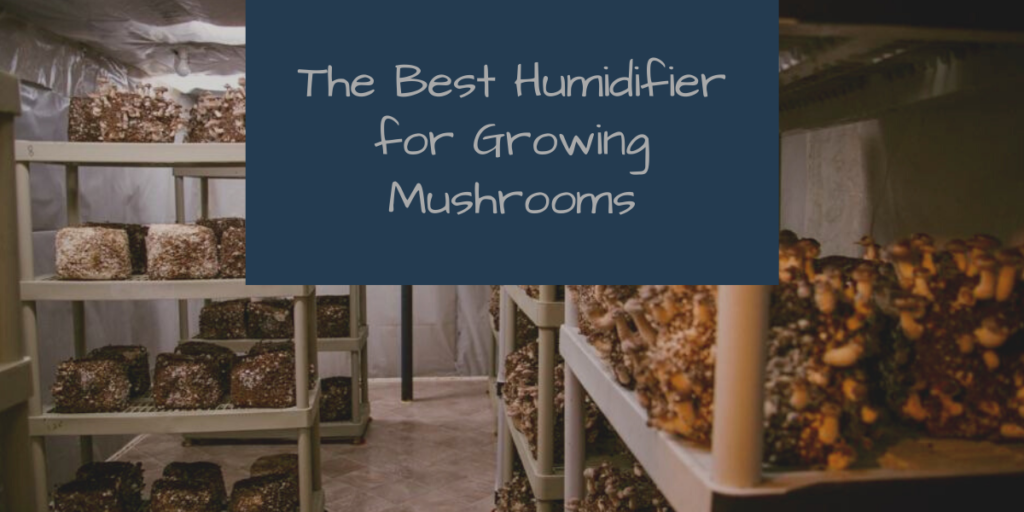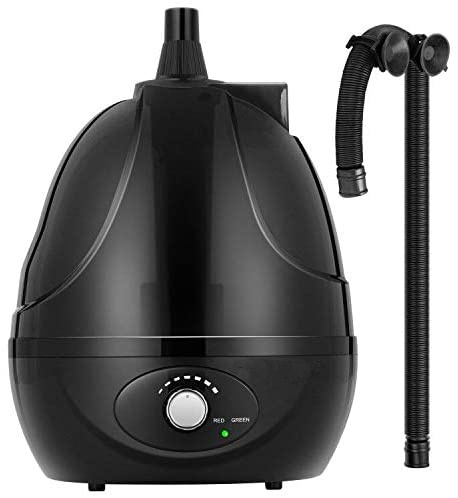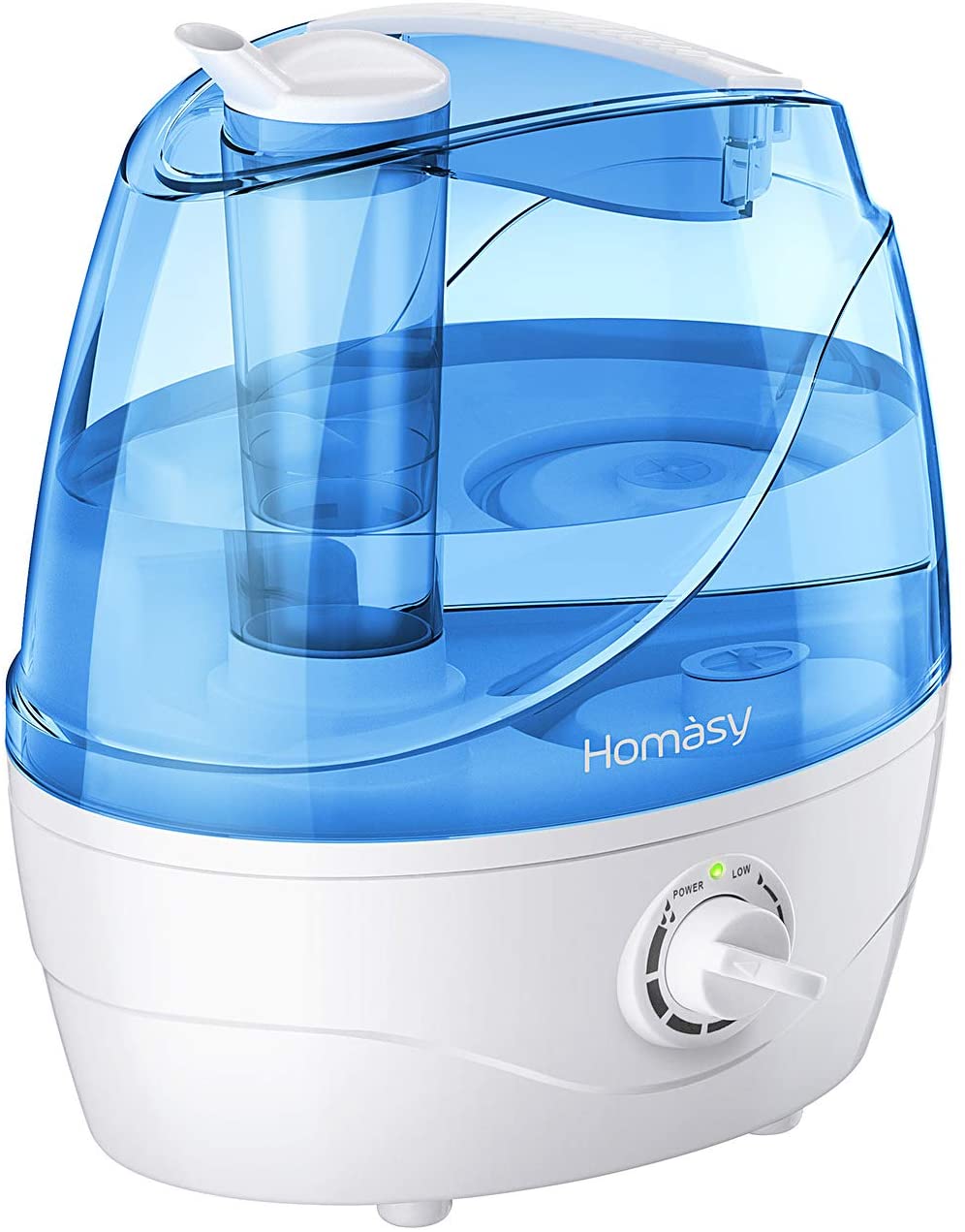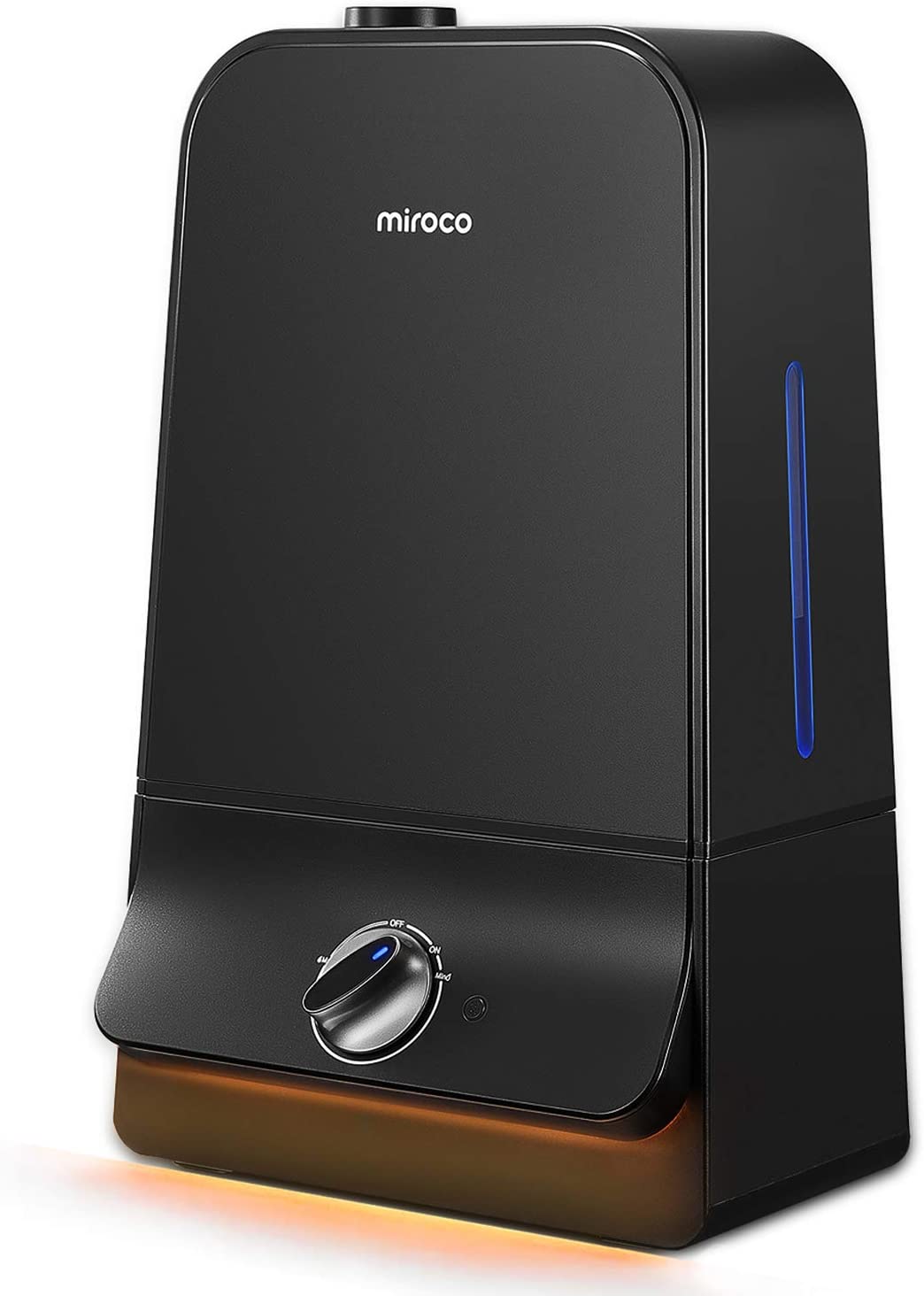Mushrooms are mostly water, so it stands to reason that they need water to grow. Too dry, and the mushrooms either won’t grow at all, or will grow badly or crack. But that doesn’t mean fungi need to be watered, the way houseplants do. For one thing, not all mushroom substrates absorb water well. For another, too much water is just as bad as too little, as it can encourage the growth of mold and bacteria.
The solution is to keep the air around the developing fungi humid. How humid depends on the specifics of the set-up and is beyond the scope of this article. The point is that humidity is one of the variables growers need to keep track of, and a humidifier is the primary tool used to keep that variable where it needs to be[i]. Humidifiers are a great for growing, specifically for anyone who wants to grow magic mushrooms.
IMAGE | PRODUCT | Header |
|---|---|---|
OUR #1 RATED Virtually silent operation, 85 oz water reservoir, Made for Grow Tents & Tubs. | ||
2.2L Quiet Ultrasonic Humidifier Auto Shut-off, Adjustable Mist Output | ||
6L, Ultra Quiet, Ultrasonic Humidifier Night light, Adjustable Mist, Auto shut off |
The Types of Humidifiers
There are a lot of different humidifiers out there[ii], so before discussing what kind of humidifier to get, let’s go over some options and definitions.
Humidifiers come in three size categories: whole-house, console, and table-top. Few, if any, growers will want a whole-house humidifier (full-size mushroom houses have their own specialized equipment) so that category can simply be ignored. Console and table-top machines are both designed to humidify a single room, and both are portable, though console humidifiers are heavy, especially when full of water—they sit on the floor and usually have wheels. Both come in cool-mist and warm-mist designs, and cool-mist humidifiers can use either a evaporative wicking system or an ultrasonic system.
The Spray Bottle
Although when most people talk about humidifiers they mean machines, an ordinary spray bottle can produce a hydrating mist, too. Spray bottles are cheap, durable, silent, energy-efficient, everything that a grower could want in a humidifier except convenient. Growers with large set-ups cannot be expected to spend all day spritzing a spray bottle by hand, which is why many people buy machines instead. But for a grower with a small set-up, perhaps a few shotgun fruiting chambers or a monotub tek chamber, a spray bottle is entirely adequate and may be the best possible option.
Spray bottles are essential as a mushroom grower. This is the exact spray bottle I use, and I suggest it because it’s long lasting, durable and well, it “sprays good”.
The Ultrasonic Humidifiers
Ultrasonic humidifiers use a vibrating disc to create their cool mist. One way to think about what they do is that they push water into the air instead of relying on the air to pull water into itself, as in evaporation. These machines are capable of raising the RH much higher, plus they run much quieter than evaporative humidifiers do, because there is no internal fan. They do tend to be more expensive than other designs, though.
My humidifier of choice. You can get the desired RH of above 90% fairly easily, but you must pair it with an on off switch. Scroll down to see “my setup”. This is the Ultrasonic Humidifier I personally use for all of my mushroom grow rooms.
Warm Mist Humidifiers
Warm mist humidifiers are also called steam evaporators. They do indeed work by heating water to make steam, then letting that steam cool to a warm mist before releasing it into the air. Because these machines contain very hot water, they can be dangerous if they spill or leak—these are not a good option around small children or pets, and should never be placed above mushroom substrate, lest a leak damage the fungus. They are also not a good option for fungi that like cool conditions. Conceivably, they could be an advantage in a grow-room that otherwise isn’t warm enough.
The main advantage of a warm mist humidifier is that they are cheaper to buy than all other types, but they can cost more to operate because they are less energy-efficient; producing heat takes a lot of energy.
I would not recommend a warm mist humidifier for Mushroom Growing, I put this in the “It’s better than nothing” group. If you must get a warm mist humidifier I’d get this one.
Evaporative or Wicking Humidifiers
Evaporative, or wicking, humidifiers are a type of cool mist machine. They contain a wick—a strip of material that naturally draws water up through itself and past a fan. The fan evaporate the water off the wick, which continually pulls up more water from the internal reservoir. The advantage is that these machines are self-limiting; the disadvantage is also that they are self-limiting.
Because they depend on the natural evaporative power of moving air, once the relative humidity (RH) gets up around 85%, the air won’t pick up any more water. That means there’s no danger of over-humidifying the air, something that can be a problem with other designs, especially with machines that can’t be set to switch off automatically at a certain RH. Unfortunately, many mushroom varieties require an RH about 90% to produce well.
If you’re looking for a humidifier that works for mushrooms that only need 85% RH, a wicking humidifier might be a good choice. This is the wicking humidifier I personally have used in the past.
DIY Humidifiers
An affordable way to produce a huge amount of cool mist is to build a humidifier using a pond fogger and a bucket[iii]. Pond foggers are, as the name implies, designed to sit just under the surface of an ornamental pond and produce lots of ornamental fog. While building a DIY humidifier takes a little know-how (instructions are available online), the basic idea is simple; place the fogger in a bucket, cover the bucket, and use an arrangement of tubes and a fan to direct the fog into the grow chamber. The humidifier cannot sit inside the chamber because the high humidity would be bad for the fan, and possibly dangerous for the electrical equipment.
DYI humidifier designs can easily be scaled up to handle large set-ups, and by building T-intersections into the tubing it’s possible to use a single humidifier for multiple grow chambers. Assuming the humidifier is designed and built well, the DIY approach has a lot of advantages. Its disadvantage is that it can be difficult to be sure what the output of a DIY humidifier will be—accidental over-humidifying is a real concern.
Choosing the Right Humidifier for Growing Mushrooms
Most growers who need more than a spray bottle are going to go for some type of ultrasonic humidifier or a DIY, although unusual circumstances may call for exceptions. The question is which ultrasonic (or DIY) to choose? The answer depends on a number of factors and will be different for different growers. A complicating factor is that humidifiers are normally sold as aids for human health and comfort, not the health and comfort of fungi—because humans have somewhat different needs from our mushrooms, the machine with the best user reviews is not always the one a grower wants.
Besides price (always important, since a great machine one cannot pay for is no use), here are four main factors to consider:
- The size of the grow chamber: the larger the grow chamber, the more moisture will have to be pumped into the air in order to maintain the same RH. And because mushroom cultivation generally calls for higher RH than human comfort does, growers usually need a slightly larger, more powerful machine than standard buying guides suggest for a given space. But a humidifier that is too big risks over-humidifying the chamber and fostering mold.
- Ease of use: before selecting a model, it’s important to find out how easily the machine is to move around and to fill, whether its controls make sense, and how easy the displays are to read. Under certain circumstances a grower might want to compromise on ease of use, perhaps in order to get a good combination pf price and moisture output, but that’s a decision that should be made deliberately—it’s never good to buy a machine and not know how easy it is to use.
- Ease of maintenance: all humidifiers must be emptied, rinsed, and dried regularly, usually every day. Otherwise, bacteria could start growing in the machine and then spraying out to fill the air. Some models also need to have parts replaced regularly. So how easy is the machine to clean? How easy is it to remove any parts that must be replaced? What do those replacement parts cost? A powerful humidifier isn’t a good deal if keeping it in working order is not practical.
- Humidistat or hygrometer? Some humidifiers have a humidistat that senses the RH and automatically shuts the humidifier off when the RH reaches the desired point. Others don’t, meaning the grower must have a hygrometer with which to reason the RH and be ready to turn off the humidifier as needed.
The Best Humidifier for Mushrooms: My Setup
Like I said, if you’re doing a few shotgun fruiting chambers, a spray bottle works, that is all you need. If like me, you have a grow room this is the setup I use.
- A hygrometer in the grow room. Make sure the hygrometer reads up to at least 90% humidity.
- An Ultrasonic Humidifier hooked up to an on/off switch.
- Alternatively you can use an all-in-one Humidity Regulator.
I then check the room periodically to see what times I should set the humidifier to turn on and off. Each room will be different. You want the room to sit between 90-95% humidity.
These are the actual products I use:
The Hygrometer: LittleGood 5″ Indoor Outdoor Hygrometer – I love this Hygrometer because it’s battery free and low maintenance. Simply just hang it on the wall or put it on a shelf and you’re good to go. Alternatively if you’re using a grow chamber, put it inside.
Humidifier: The Mushroom Monsoon. If you’re buying a humidifier for mushrooms, this is the one. It’s made specifically for mushroom operations including grow tents and tubs. It comes with a super fine water vapour output and a unique stretchable tube that allows it to adapt to any grow setup.
The on/off Timer: BN-LINK Short Period Repeat Cycle Intermittent Timer – These are great little devices because if you can set the on and off time to different intervals which is perfect for dialing in the humidity of a room.
or
The Humidity Regulator: WILLHI WH1436H 110V Digital Air Humidity Controller – I find the on off timer works well enough and saves a bit of money. However; if you want something that is a lot more hands off a Humidity Regulator works great, it’s just a bit more money.
References:
[i] Shields, T. (n.d.). Best Humidifier for Growing Mushrooms
[ii] (2020). Humidifier Buying Guide. Consumer Reports website, accessed June 14, 2020.
[iii] (n.d.). Let;s Build a Humidifier! All the Mushrooms






